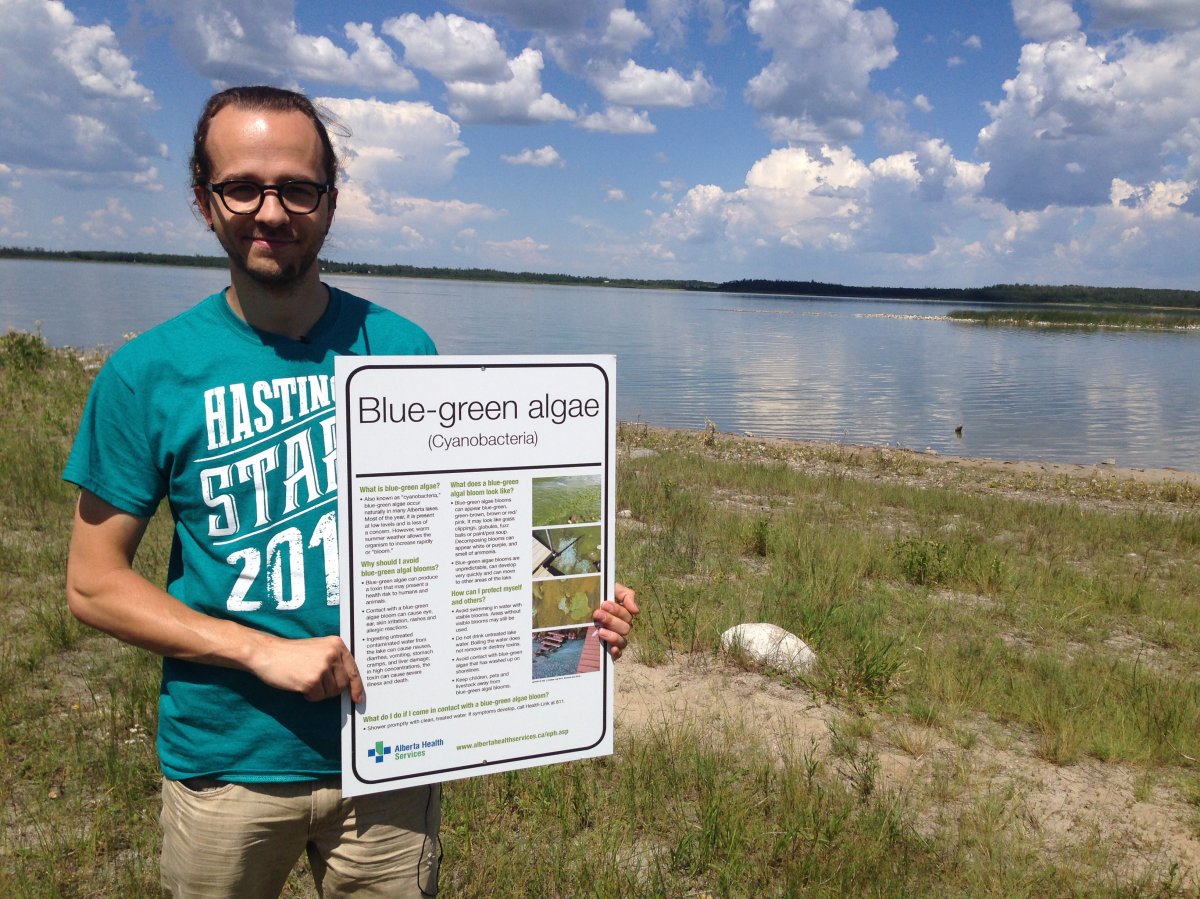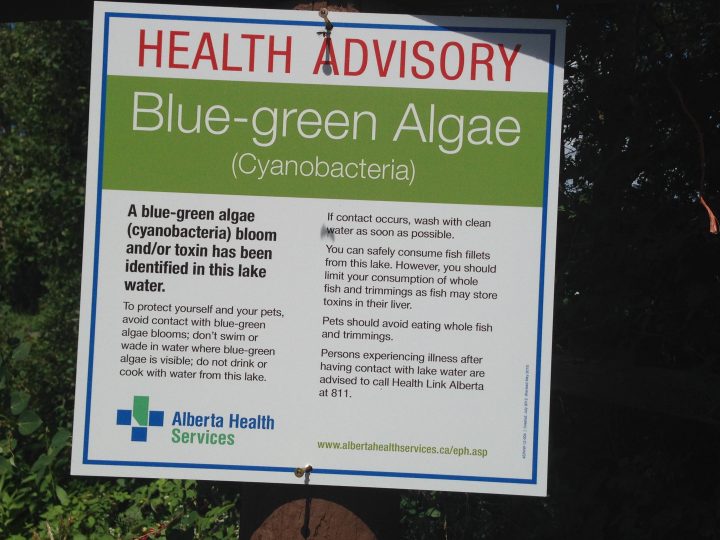Just days ahead of the long weekend, Alberta Health Services issued blue-green algae advisories for a couple of Edmonton-area lakes.

Blue-green algae blooms have been found in Hastings Lake and Half Moon Lake, both located in Strathcona County.
Doctor Chris Sikora, medical officer of health explained “many of the cyanobacteria do produce a toxin that can be harmful to humans when they come in contact with it.”
Residents and visitors are asked to take the following precautions:
- Avoid all contact with the blue-green algae blooms. If contact occurs, wash with tap water as soon as possible
- Do not swim or wade in any areas where algae is visible – this includes pets
- Do not feed your pets whole fish or fish trimmings from these lakes
- Limit human consumption of whole fish and fish trimmings from these lakes, because fish could store toxins in their liver
Blue-green algae (cyanobacteria) is naturally occurring, and often becomes visible when weather conditions are calm. It appears on the lake like scum, grass clippings, fuzz or globs on the surface of water. Blue-green algae can be blue-green, greenish-brown, brown or pinkish-red. It often smells musty or grassy.
READ MORE: ‘I can’t stand it’: Pigeon Lake residents concerned about stench coming from water
Sikora said there are a few reasons why the blooms have built up recently.
“It seems to be more related to the presence of increased sun helping the organisms reproduce and an increased nutrient load.”
At Half Moon Lake, Jennifer Payne noticed something was off right away.
“Just yesterday we got out here and it looked a lot greener,” she said. But she didn’t realize there was a bloom.
MiKenLee Payne said the algae can be worrisome.
“I’m a little nervous to go in sometimes and for my kids to go in. But we still enjoy being out here at the lake.”
Normally, she would expect to see the algae later in the summer.
“It never seemed this green, this early, to me.”
Last year, AHS issued the first advisories for blue-green algae on June 11, four other lakes would fall under the advisories later that month.
The Hastings Lake Bible Camp has had to put up warning signs from AHS for the last few years, just not usually in June.
“We’ve had problems with it in the past, in the past five years that I’ve been here, although it’s always come after Aug. 1,” camp manager Andrew Carlson said. “This year is significantly earlier than usual.”
Declining water levels and leeches mean the camp has a swimming pool. They only use the lake for canoeing.
“We’ll just let everyone know if they’re uncomfortable canoeing in the lake, they won’t have to,” Carlson said.
Sikora said the presence of blue-green algae doesn’t mean a lake is totally off limits.
“The advisory is to not come in contact when you see blue-green algae visible. If there’s no blue-green algae that you can see in the area you want to use, it should be okay to use.”
People who come in contact with blue-green algae may experience skin irritation, rash, sore throat, sore red eyes, swollen lips, fever, nausea and vomiting and diarrhea. Symptoms usually appear within one to three hours and go away within one to two days.
For more information on blue-green algae advisories, visit Alberta Health Service’s website.















Comments